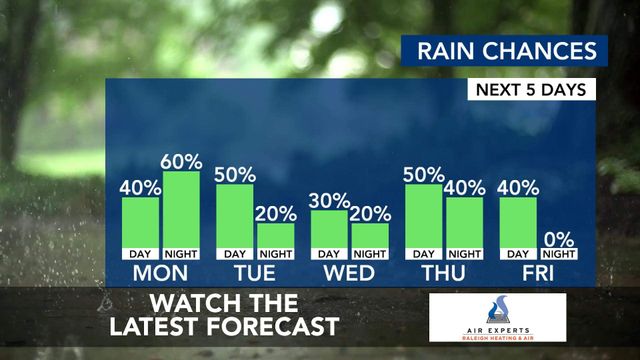NC Forest Service and others help rid NC of the Bradford Pear stench

It's that time of year again, when the smell of rotting fish fills the suburbs as Bradford pear trees begin to bloom. The smell comes from a combination of trimethylamine and dimethylamin, emitted by the trees to attract pollinators like birds which spread seeds far and wide.
Rapid growth, drought tolerance, and easy transplantation of these ornamental trees has made them a popular choice for developers who install one in each front yard of many suburban neighborhoods.
But what was once described as the perfect tree became and invasive species as birds spread them into natural forests. Bradfords and their descendents displace native trees that cannot compete according to Kelly Oten, Assistant Professor and Extension Specialist at NC State. Their early foliage shades out later developing native species reducing biodiversity.
Arborists know it as pyrus calleryana, a member of the rose family native to portions of China, Japan, Korea, Taiwan, and Vietnam. Pyrus is Latin for pear and calleryana honors Joseph Callery, an Italian missionary to China and botanical collector who brought it, and 2,000 other plants, back to Europe in the 1800s.
Originally bred from pyrus calleryana in the 50s for resistance to fire blight, a fungal disease in actual edible fruit bearing pear trees, the Bradford gained popularity in the mid 60s as an ornamental tree for its early spring flowers and low-maintenance. You'll see them coast to coast across southern states but not very far north because they do not tolerate extreme cold.
You'll also see fewer in older neighborhoods as their thin, fast growing limbs with weak connections to the trunk can snap under their own weight. Hurricanes are also the natural enemy of Bradford pears for the same reason.
NC Bradford Bounty Program
The NC State Extension, NC Forest Service, NC Urban Forest Council, and NC Wildlife Federation offered to replace up to five Bradford pears with native trees. The annual program is open to homeowners, businesses or anyone else looking to replace these trees on their property, and requires pre-registration at treebountync.com.
Three to ten foot tall replacement trees come in 5-7 gallon containers and must be picked up at the event. Native trees include the program since it began in 2022 include boxelder, red maple, silver maple, serviceberry, pawpaw, flowering dogwood, river birch, eastern redbud, american beech, tulip-poplar, swamp blackgum, sycamore, and swamp white oak. The program announces the selections included in each replacement event on their Facebook page.
The program was so popular in 2022 that organizers halted it when demand outstripped the supply of alternative trees.
The event in Spindale, NC on April 6, 2024 is open to all North Carolina residents. Another on May 4, 2024 is open only to residents of Henderson County.
Spindale is another hour west of Charlotte but the day trip might be worth it to rid your yard of the spring stench and post storm cleanup. You'll need to provide before and after photos and are responsible for removal. Tree companies statewide offer discounts. Full details are available on the program website.










